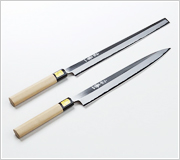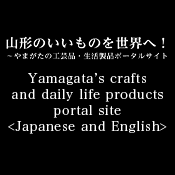トップページ > YAMAGATA introduction
YAMAGATA introduction - Foods
-
Strawberries
Shiny and glossy!A perfectly-balanced flavor between sweet and sour.
Otome-gokoro is Yamagata prefecture's new and original variety of spring strawberry. It has a characteristic rich flavor. When you taste one, you can enjoy the fresh sweetness and original fragrance in your mouth. This strawberry's flesh is juicy and well-filling. Also the surface of the strawberry is glossy and beautiful, it looks cute.
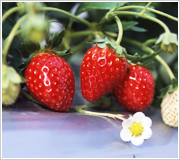
-
Cherries
Ruby-red jewelry in fruit gardens
Cherries are the kings of Yamagata's early summer fruits. Yamagata produces around 70% of all the cherries in Japan. Sato Nishiki is the most renowned of all Japanese cherries. It took 16 years to develop it during the Taisho era. Brilliantly ruby-red, soft, sweet and juicy - Sato Nishiki is the most popular cherry on the market. Please try our “ jewel of the fruit garden ” , which is well- produced by fruirts farmer.
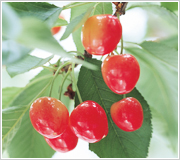
-
Melon
Delicious melon nurtured by high-quality ground water and dune soil
The sand dunes of Shonai Beach boasts the best conditions for melon production, with well-drained soil, significant changes in temperature between day and night, and abundant and high-quality ground water. A netted melon with green flesh called "Andes" is mellowly sweet and has excellent texture, and is one of the most popular varieties of melon from Yamagata.
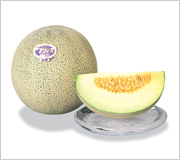
-
Peach
Sublimely juicy and fresh
Most of the peaches in Yamagata prefecture are closely monitored for sugar content using light sensors. Yamagata's peaches have a reasonable firmness and smoothness. Also, Peach juice contains fully- sweetness. It can help to bear perfect peach fruits. Please enjoy summer flavor grown by lovey sunshine shower.
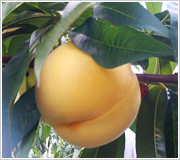
-
Grapes
Taste like honeysyrup, very popular
Once summer comes, Yamagata-produced Delaware grapes are lined up at shop fronts. The individual grapes are small, but they taste like honeysyrup - it has a well-balanced flavor between acidity and sweetness. This is the reason for their popularity. We also produce many other varieties of grapes like “Kyoho”, called “Grape King”, “Shine muscat”,“ Takao”,“Pione” and “Aki Queen”.
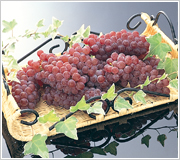
-
Western pear
Rich aroma and melt-in-your- mouth texture
Yamagata produces around 80% of all the “La France” pears in Japan. It has a unique rich aroma and melty -in-your-mouth and juicy flesh. It is called the Queen of Fruits. Since the La France pear does not get fully ripe on the tree, it is diffucult to grasp the shipping timing and control quality after harvesting, however, we can provide you the best autumn flavor in Japan.
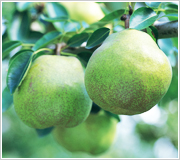
-
Persimmon
Richly sweet and seedless "king of astringent persimmon"
Shonai-gaki is a variety of seedless persimmon with tannins, and is named after its producing area. This squarish variety is richly sweet and delicious, and also known as the "great king of astringent persimmon." In recent years, a brand called "Kaki-shigure," from which the astringency has been removed while the fruits are still on the branch, is acclaimed as the pinnacle of Shonai-gaki, which is suitable as gifts.
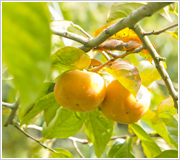
-
Apple
Fully-filled honey-core in apple. Well- balanced flavor between sweetness and sourness.
Yamagata “Fuji” grows with taking a lot of sunshine without protective package. It is often called “Autumn flavor”. Inside of apple flesh, it contains honeycore fully. This apple has well-balanced flavor between fresh sourness and rich sweetness.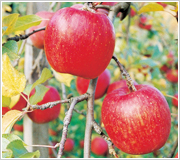
-
Green Soybeans"Dadacha Mame"
Japan's most famous and tasty edamame soybeans
A variety of edamame soybeans can be found in Japan, but "dadacha mame" from the Shonai region of Yamagata has drawn significant attention as the most delicious edamame in Japan. Attracted by its rich taste and texture like Japanese chestnuts, both locals and tourists alike are willing to line up to buy dadacha mame.
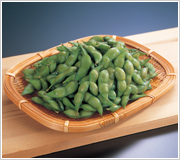
-
Yamagata beef
Good quality Yamagata beef, grown in Yamagata's beautiful countryside.
Yamagata is known as Yamagata beef production area, also has a four clearly separated seasons. Summer is very hot and Winter is very cold.
Also, there is a wide range in temperature between day and night. Delicious beef can be produced in this climate. We also have the top-class of feeding skill in all Japan. Beautiful beef can be produced by our traditional rich nature and with the love of our beef producers. We can provide you with delicious beef for “Sukiyaki” or “Yakiniku” throughout the year.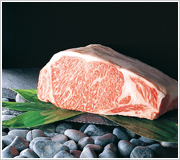
-
Soba noodles
Traditional techniques and flavor handed down from generation to generation. Enjoy our hospitality with our hand-made soba.
Yamagata has many varieties of soba noodles. Each soba restaurant has it's own taste and style. There is a “city style soba”, which can be eaten smoothly. Also, there is a “country style soba”, which is simple and plain, but has a great soba aroma. If you visit Yamagata, you will definitely be able to find a soba type which suits you.
We have “Gassan Sansai Soba”, where you dip cool soba noodles into a pot of mountain vegetable and mushroom soup. Another soba is cool “Niku Soba” which has chicken and leek on top of the soba. This was started in Kahoku-machi. Also, We have “Gesoten soba”, which has a deep-fried squid on top of the soba. Especially, There is “Ita soba”, which used to be served in a big in the farmer meeting. You can enjoy the vestige of their old style.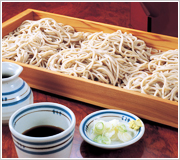
-
Ramen
Truly delicious noodles that count
It is said that ramen is eaten more in Yamagata Prefecture than in any other prefecture in Japan. You can enjoy a variety of ramen here, including hiyashi (cold) ramen born in the city of Yamagata with cold and refreshing soup, torimotsu (giblet) ramen from the city of Shinjo, Yonezawa ramen with thin and curly noodles and light soy-sauce soup, and Sakata ramen with thin-skin wonton and seafood soup, depending on the areas you visit.
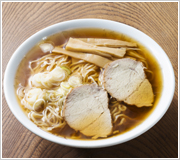
-
Oysters
In summer, why not try oysters living in fresh cold river-bed water from Mt. Choukai.
We have delicious oysters which you can eat in the middle of summer. From June to the middle of August, the oyster is in season. The oysters from Yusa-machi, Fukuura, is especially famous, locating close to Akita Pref. Fresh and cold river-bed water of Mt. Chokai come out on the seabed. It helps to raise oyster. Since this oyster has big volume, once you hold in your mouth, you can feel its juicy weight. It also contains the fragrance of fresh ocean and sweetness.
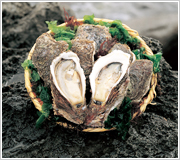
-
Rice
Yamagata, which has fertile land and good growing conditions for rice, is renowned for its rice production.
In addition to fertile land, Yamagata has a wide range in temperature between day and night, and also between summer and winter. It is well-known that Yamagata has the best conditions for rice growing. Currently, Yamagata produces mainly “Haenuki rice”, which is the original type encouraged for paddy rice. Also, we produce Hitomebore, Koshihikari, Akitakomachi and many more varieties of rice.
“Tusya-hime” was newly released in October 2010. It has a nice flavor, also on the rice tasting test by general people, it has got a good reputation for rich and classy flavor.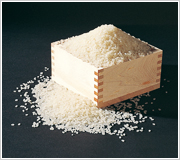
-
Sake
Excellent hand-made sake born amid rich nature with high-quality rice and clear water
The distinctive sake of Yamagata is produced with clear water from rich nature, rice that Yamagata Prefecture has developed specifically for sake production (Dewa Sansan, Dewa-no-sato, and Yuki-megami), as well as the region's traditional high-quality sake producing methods. In December 2016, Yamagata became the first sake-producing prefecture to receive its own geographical indication (GI).
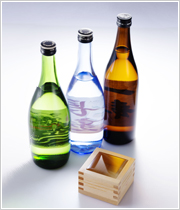
-
Wine
Yamagata wine produced with high-level skills from vine culture to vinification
It is said that good wine is made from good grapes. As if to prove the saying, Yamagata, the prefecture with highest-level grape production in Japan, is one of Japan's most famous wine production prefectures too. Benefitting from high-quality grapes produced within the prefecture and ideal climate, many Yamagata wines have been awarded in the Japan Wine Competition, attracting attention from both at home and abroad.
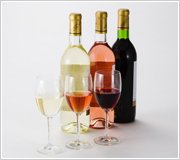
YAMAGATA introduction - Crafts
-
Ironware
Yamagata Ironware: matured over 900 years
It is said that when Yoritomo Minamoto took part in various fights to subjugate Oushu area during the Heian era (circa 1060 AD), a blacksmith in his army found that sand and mud at the Mamigasaki riverside was suitable for casting iron. He decided to stay there. Yoshiaki Mogami (1546-1614) later created a castle town there, which provided protection for the blacksmiths. This led to the development of an iron casting culture in Yamagata. Yamagata Ironware has a characteristic thin-walled structure and a delicate design. Traditional techniques, like Monyou-oshi (original mold shape process), Hada-uchi (skin-creation process), and Kanake-dome (rust prevention process) have been passed down from generation to generation.
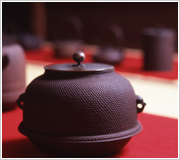
-
Furniture
A fusion of traditional and innovative techniques gives perfect functionality and beautiful designs
It is said that the furniture makers of Yamagata Prefecture originated from Shokunin-machi (professional workers area) for joiners and laquerware makers for desk, box and closet etc. As time passed, it was industrialsed, developing into one of our representative local industries.
In the Yamagata style of manufacture, the wood is sliced thinly (around 1mm), then the thin layers of cut boards are overlapped with each other and compressed. This is called molded plywood. The techinique for forming with heat and bending are one of the traditional skill. The beautiful and softly curved designs that this technique enables will give a healthy and comfortable atmosphere to your living space.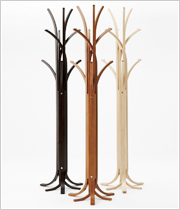
-
Carpet
Excellent handcrafted carpets, made with a consistent manufacturing process from the thread, to dyeing, weaving, to the finishing process
Yamagata's carpets have been made since before World War 2. All of the processes, like spinning, dyeing, weaving and the gross finish with chemical washing, are performed consistently. Excellent quality is guaranteed for outstanding endurance, gloss and flexibility.
Yamagata's carpets have been used in the Vatican Palace, Japanese Imperial Palace, and the Imperial Guest House in Akasaka. The design and color tone have a high reputation for elegance all over the world.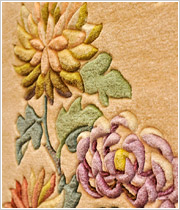
-
Wickerwork
Daily commodities made of wickerwork becoming popular to attract buyers from Tokyo
The wickerwork of Yamagata is made by interlacing natural materials such as akebi vines or the bark of wild grapes and walnuts, utilizing techniques handed down for generations. The basket made of wild grape vines in particular is flexible and have good color and texture. Further, it will get luster and additional charm when using it for a long time.
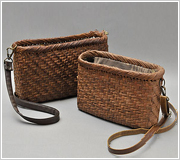
-
Yonezawa-ori
One of Japan's most famous areas for traditional silk fabrics turning out to be textile industry hub
Yonezawa-ori fabric originated about 220 years ago as a measure to promote the region's industry, initiated by Uesugi Yozan, Lord of the Yonezawa domain. Since the early days, the Yonezawa-ori industry has made great efforts to improve production techniques for women's kimono, and today, Yonezawa's textile techniques are acclaimed as the best in the world along with that of Lake Como of Italy. Yonezawa is also the biggest production area of the fabric for hakama (a Japanese formal pleated garment). Traditional handweaving techniques using plant-dyed yarn have been duly handed down by generations of professionals.
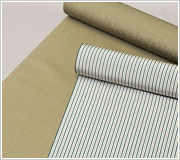
-
Safflower Dyeing
Safflower coming from Egypt via the Silk Road blossoms out in Yamagata
Safflowers (benibana in Japan) were first brought to Japan in the Asuka period (592-710) and then to Yamagata in the Muromachi period (1338-1573). By the middle of the Edo period (1603-1868), Yamagata had become the largest safflower producing region in Japan, thanks to the expansion of the shipping industry of the Mogami River. Nationally renowned silk scarves and fabric for kimono are made by dyeing using the safflower of the region with traditional techniques.
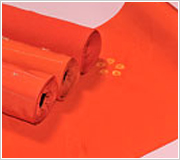
-
Pottery
Ceramics with various textures produced by different potteries
Yamagata Prefecture is proud of its potteries, such as Hirashimizu ware, Kaminohata ware, Shinjo-higashiyama ware, Yonezawa ware, and Narushima ware. As different potteries use different clay from their own areas and proprietary glazes, it gives their ceramics distinctive texture and feel.
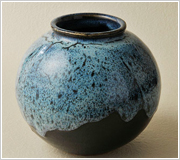
-
Cutlery And Implements
Inheriting the tradition of swordsmiths, the challenge for new craftwork for Yamagata swordsmith.
It is said that around 650 years ago, the founder for Mogami family, Kaneyori Shiba(1315-1379) moved to Yamagata. He took his own smiths with him. Swords and farm equipment were produced according to times. Currently, scissors, knife and sickle are produced. The amount of production forcutlery and implements is highest in Tohoku area.
“Kaji-syou“ is the brand for smith groups trying to create new design.
They are careful in selecting the technique(free forging) and materials (Blue Paper steel). They focus on modern design, sharpness and easy use.